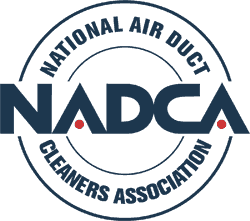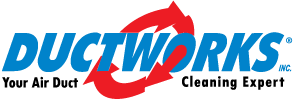 Local HVAC System Inspector Achieves Prestigious Certification
Local HVAC System Inspector Achieves Prestigious Certification
WASHINGTON, DC – Local contractors Donald Kaufman, Paul Frisk, Edward Frisk, and Jason Erb of Ductworks, Inc has successfully completed the examination process to be named a Certified Ventilation System Inspector (CVI). The certification, which is administered by NADCA – The HVAC Inspection, Maintenance and Restoration Association, is recognized worldwide as the hallmark of the HVAC industry’s most qualified and reliable inspection professionals.
“While achieving the CVI certification takes commitment on the part of an HVAC professional, the certification itself is a commitment to consumers of reliable, best-in-class service,” explained NADCA Executive Director John Schulte. “NADCA membership and the CVI certification mean that a professional is dedicated to providing state-of-the-art service to their customers.”
The CVI designation recognizes the knowledge and understanding of various HVAC components and systems and the proper methodology for conducting a comprehensive inspection that meets the intent of NADCA’s Standard for Assessment, Cleaning & Restoration of HVAC Systems (ACR).
Donald Kaufman, Paul Frisk, Edward Frisk, and Jason Erb are now four of roughly 250 CVI-certified professionals in the world.
HVAC system cleaning is the process by which heating, air conditioning, and ventilation systems are cleaned to remove excessive accumulations of dust, debris, and biological contaminants. With heightened public awareness of the dangers of indoor air pollution and the need for home energy efficiency, the demand for professional HVAC system cleaning has increased dramatically. The NADCA Certification Program helps to ensure that members of the association possess the required knowledge and expertise to perform these services in a competent and professional manner.
NADCA recommends that homeowners and building managers have their HVAC systems inspected annually and cleaned as needed. For more information regarding the benefits of professionally performed HVAC inspection and maintenance, contact Donald Kaufman, Paul Frisk, Edward Frisk, and Jason Erb at Ductworks, Inc.
About Ductworks, Your Air Duct Cleaning Expert
Ductworks, Inc. “Your Air Duct Cleaning Expert” is a Denver-based company founded in 1990 to improve indoor air quality for homes and businesses. Their patented system of scraping and vacuuming is the most effective process for air duct cleaning. They have more technicians certified by the NADCA than any company in Colorado and provide customers with before and after photos to insure top quality performance.
About NADCA:
NADCA – The HVAC Inspection, Maintenance and Restoration Association was formed in 1989 as the National Air Duct Cleaners Association, and has since expanded its mission to become a trusted advocate for consumers and the industry on environmental and health issues surrounding heating, ventilation and air conditioning (HVAC) systems. NADCA was the first organization to develop industry-standard best practices and its standard for “Assessment, Cleaning & Restoration of HVAC Systems” is in use in more than 30 countries worldwide as a best practice and/or basis for national law. NADCA has more than 1,000 corporate members and more than 1,500 individuals certified as Air System Cleaning Specialists, Ventilation Inspectors or Ventilation System Mold Remediators. For more information or to find a NADCA-certified contractor near you, visit www.Nadca.com.


 Air pathways are a key component of indoor air quality. Understanding and improving air pathways will greatly improve your indoor air quality.
Air pathways are a key component of indoor air quality. Understanding and improving air pathways will greatly improve your indoor air quality. You may have heard about having your air ducts cleaned, but how do you know if you need to? Here are a few tips to help you decide if the time is right for you to clean you air ducts.
You may have heard about having your air ducts cleaned, but how do you know if you need to? Here are a few tips to help you decide if the time is right for you to clean you air ducts.